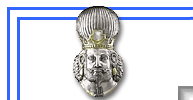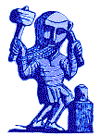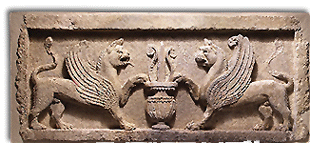 |
 |
WE HAVE NOW MOVED OUR INVENTORY OF ANCIENT AND
www.vcoins.com/calgarycoin
|
|||||||||||
|
(Reference: Sellwood - An Introduction to Sasanian Coins by D. Sellwood.) |
|
 Sassanian. Varhran I. AD 271-274.
Silver drachm.
Sassanian coins of this period are of much finer style
than those
can came about 100 years later. Varhran I is a relatively rare
King. SOLD
Order
# 1092
|
 Sassanian. Artashir III, AD 628 to 630.
silver drachm.
SOLD
Order
# 3044
|
|
(Reference: Sellwood - An Introduction to Sasanian Coins by D. Sellwood.) |
|
ALL PRICES ARE IN US DOLLARS
CANADIAN ORDERS MUST ADD GST/HST TO ALL PRICES
Next page of Greek Coins
Top of Page


SASSANIAN COINS(Reference: Sellwood - An Introduction to Sasanian Coins by D. Sellwood; R. Whitting & R. Williams and Mitchiner - Ancient and Classical World.) Sassanian drachms (which make up 99% of Sassanian coins one comes across) are often struck on thin flans, where there is not enough metal thickness to fill the dies. This often results in weak area on one side, which mirror the high points directly opposite on the other side (this is common on many European medieval coins as well). One should view an example with minor weak areas as normal. Coins that are well struck on both sides should be viewed as superior example worth a premium. Identifying the King on a Sassanian coins is not too difficult even if you cannot read the inscriptions. Each King had a unique style of crown. Once you get used to looking at the crowns, the rest is easy (sort of). Then again, reading the dates and mints on the dated issues can be difficult at the best of times. SHAPUR I, AD 240-270VAHRHAN IV, AD 388-399YAZDGARD I, AD 399-420KAVID, AD 488-531Kavid actually had two reigns. The first from AD 488-496 and the second from AD 498-531. He started the practice of putting regnal dates on his coins with Year-11, which was the 11th year from the start of his first reign but also the first year of his second reign. The practice of the dating the coins was at first sporadic, and not all of his second reign coins will be dated. |
| Top of Page Copyright © 1997-2005 R & T Enterprises Ltd. |
 |